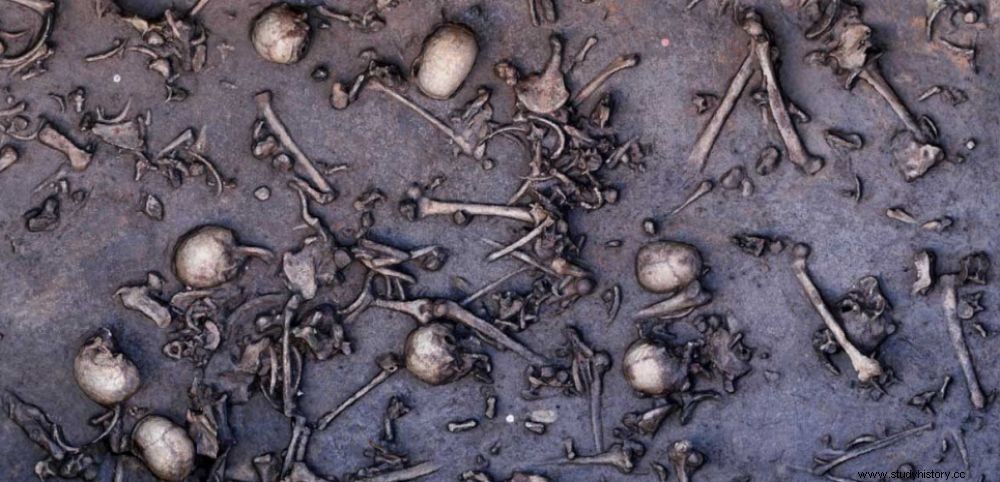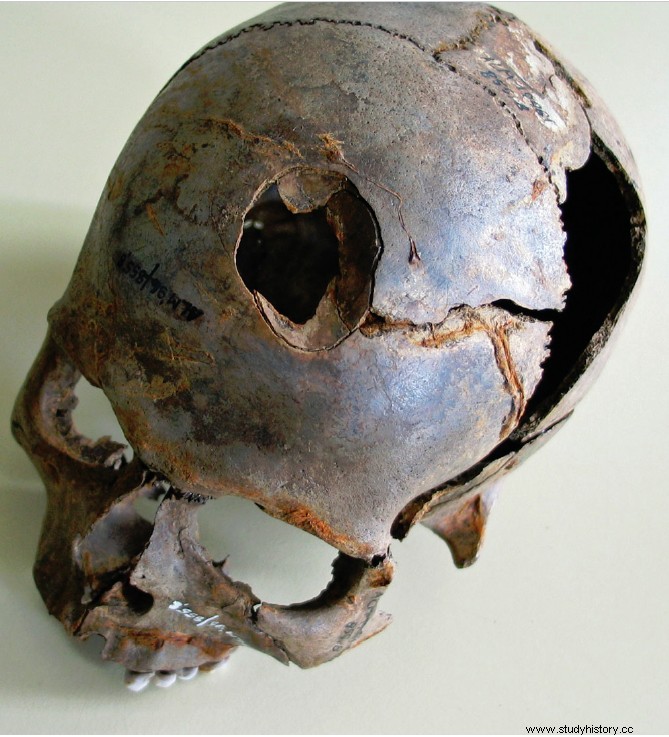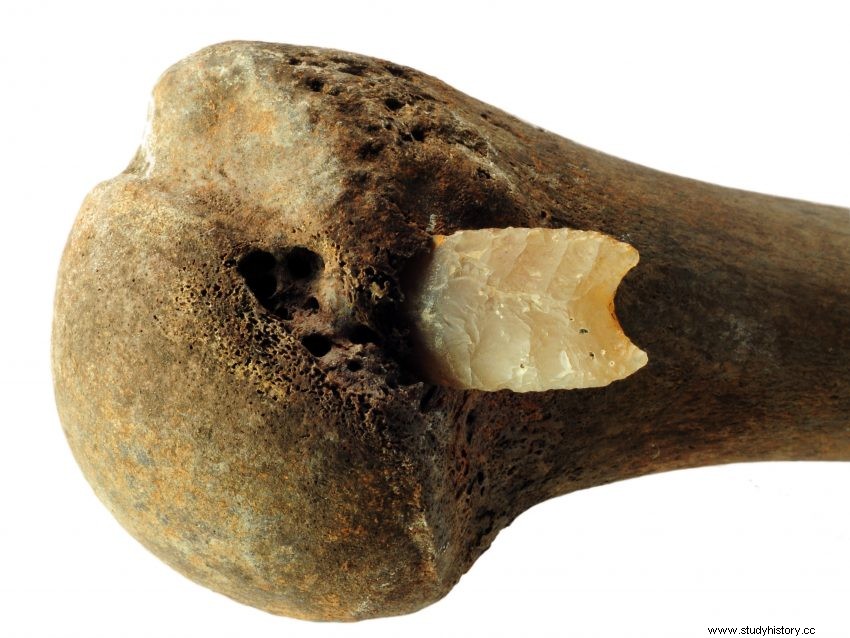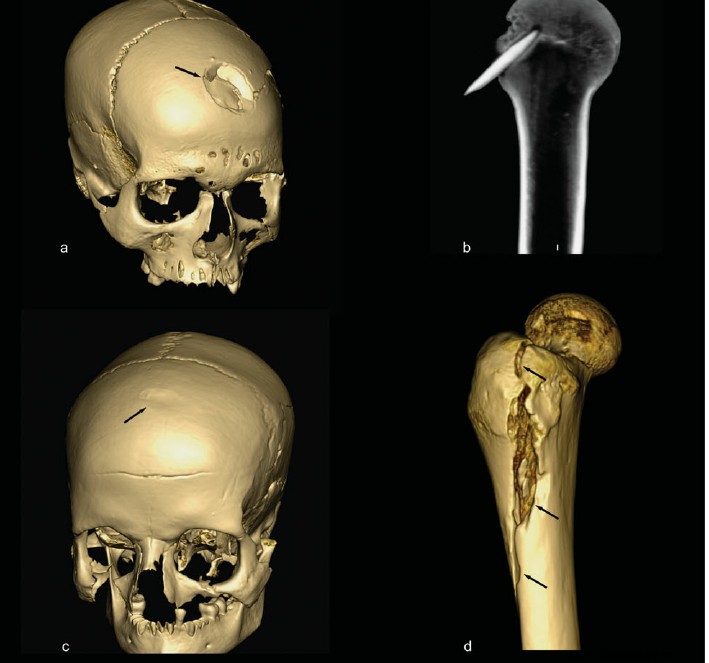 Remains of a Bronze Age battlefield on the Tollense River, Germany.
Remains of a Bronze Age battlefield on the Tollense River, Germany. BATTLE. 3200 years ago, did two armies made up of thousands of men violently clash in northeastern Germany? This is what seems to indicate the many bones unearthed on the banks of the Tollense river, in the Mecklenburg-Vorpommern region, 120 km north of Berlin. According to a recent article published in the journal Science , nearly 200 human remains, some still pierced by flint arrowheads, and remnants of weaponry have been exhumed from the muddy sediments. It would seem that the corpses of the fighters who fell into the river were carried away at the time by the currents before settling in this alluvial zone of 3 kilometers in extension where they stayed for more than 3000 years. Knives, arrowheads, spearheads, adzes (a type of axe), dagger blades, fragments of swords, as well as wooden "puzzles" 70 cm long were also found.

Skull with large fracture found on the banks of the Tollense River, Germany. © D.Jantzen
The first indications of this brutal confrontation date back to 1996. At the time, a skull and human bones with arrow wounds could be dated to the Middle Bronze Age, around 1250 BC. Blows and frontal wounds indicated face-to-face combat. For six years, archaeologists from the Mecklenburg-Vorpommern Historic Preservation (MVDHP) and their colleagues from the University of Greifswald (UG) then patiently extracted the remains of men and horses from the peat. Work that continued until 2015. "Nothing like it had ever been discovered in Europe , explains Cyril Marcigny, archaeologist specializing in the Bronze Age at the National Institute for Preventive Archaeological Research (Inrap).

Flint arrowhead embedded in arm bone. Site of Tollense, in Germany. © S.Suhr
"Never before had so many fighters been found with so many weapon impacts and traces of violence. Quantities disproportionate to what could have been unearthed in Tormarton, England, or Trondelag, in Norway", continues Cyril Marcigny. But the density of human remains cleared over the 450 m 2 of excavated area would represent only 10% of the total discoveries! At least 4,000 fighters could indeed have clashed around this river, according to specialists.

3D images:Traces of trauma recorded on bone remains from the Tollense valley, Germany. © D.Jantzen
New research carried out in Berlin and at the University of Rostock has produced detailed 3D images of the lesions found on the bodies. Strontium analyzes carried out on the teeth revealed that these warriors came from different places hundreds of kilometers away, in particular from Poland and the Netherlands. Why did these peoples clash at the edge of this river? Who were they? Impossible to say for now. One thing is certain:they were very active warriors. 27% of the remains indeed bore traces of wounds in the process of healing, traumas linked to recent previous battles.
